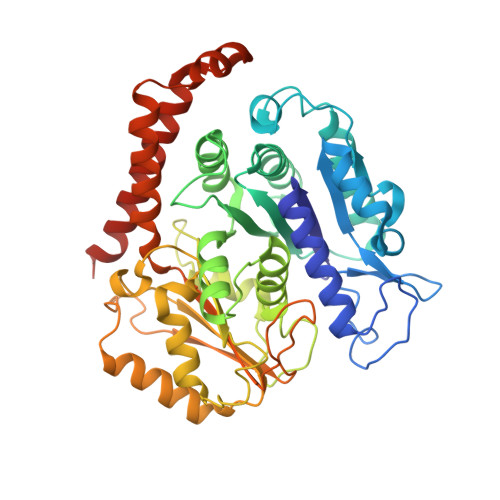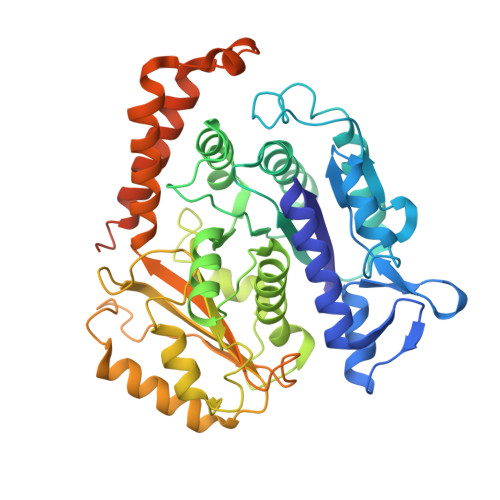Structure of the native gamma-tubulin ring complex capping spindle microtubules.
Dendooven, T., Yatskevich, S., Burt, A., Chen, Z.A., Bellini, D., Rappsilber, J., Kilmartin, J.V., Barford, D.(2024) Nat Struct Mol Biol 31: 1134-1144
- PubMed: 38609662
- DOI: https://doi.org/10.1038/s41594-024-01281-y
- Primary Citation of Related Structures:
8QRY, 8QV0, 8QV2, 8QV3 - PubMed Abstract:
Microtubule (MT) filaments, composed of α/β-tubulin dimers, are fundamental to cellular architecture, function and organismal development. They are nucleated from MT organizing centers by the evolutionarily conserved γ-tubulin ring complex (γTuRC). However, the molecular mechanism of nucleation remains elusive. Here we used cryo-electron tomography to determine the structure of the native γTuRC capping the minus end of a MT in the context of enriched budding yeast spindles. In our structure, γTuRC presents a ring of γ-tubulin subunits to seed nucleation of exclusively 13-protofilament MTs, adopting an active closed conformation to function as a perfect geometric template for MT nucleation. Our cryo-electron tomography reconstruction revealed that a coiled-coil protein staples the first row of α/β-tubulin of the MT to alternating positions along the γ-tubulin ring of γTuRC. This positioning of α/β-tubulin onto γTuRC suggests a role for the coiled-coil protein in augmenting γTuRC-mediated MT nucleation. Based on our results, we describe a molecular model for budding yeast γTuRC activation and MT nucleation.
- MRC Laboratory of Molecular Biology, Cambridge, UK. tdendooven@mrc-lmb.cam.ac.uk.
Organizational Affiliation:

















